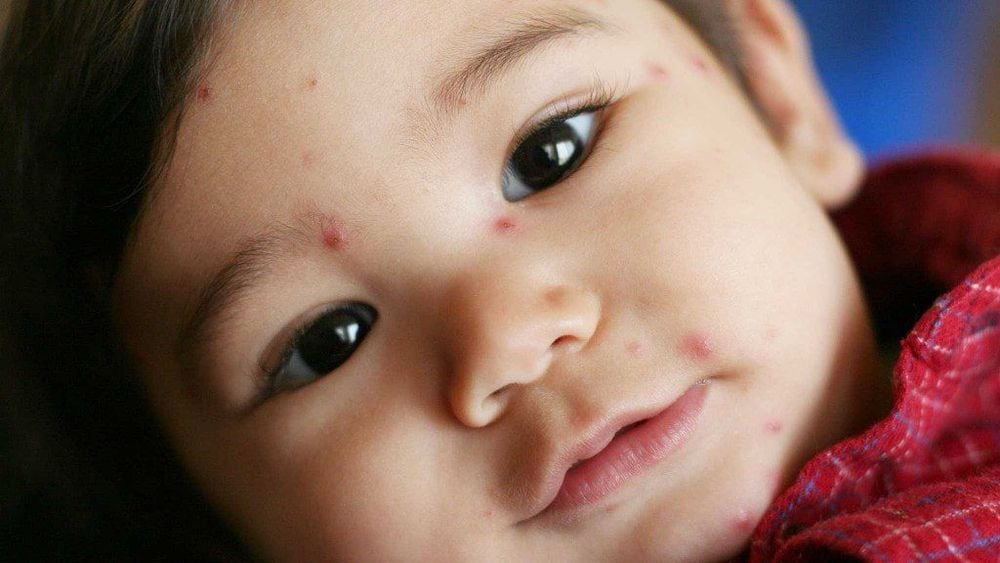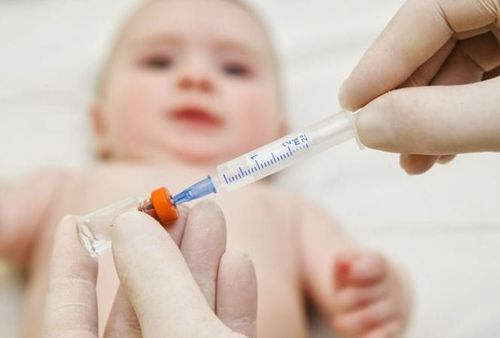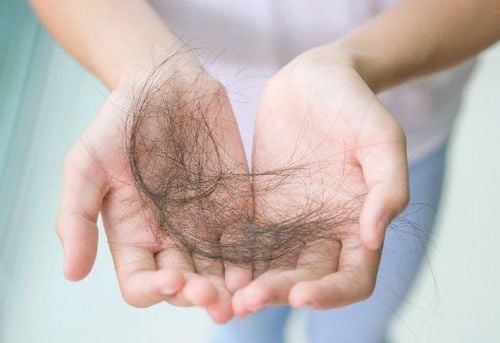This is an automatically translated article.
The article is professionally consulted by Master, Doctor Vu Quoc Anh - Pediatrician - Department of Pediatrics - Neonatology - Vinmec Danang International General Hospital. Dr. Anh has nearly 10 years of experience as a resident doctor and treating doctor at Hue Central Hospital and Da Nang Children's Hospital. Her strength is diagnosis and treatment of pediatric diseases; Pediatric resuscitation and first aid.Smallpox is a common acute infectious disease that can affect people of all ages and is common in children. When sick people carry the smallpox virus, when they talk, sneeze, sneeze, or cough... then the viruses are sprayed out with saliva and snot, dissolving into dust. Other people breathing in the dust will immediately spread smallpox.
1. What is smallpox?
Smallpox is caused by a virus called Variola virus. When sick people carry the smallpox virus, when they talk, sneeze, sneeze, or cough... then the viruses are sprayed out with saliva and snot, dissolving into dust. Other people who breathe in the dust will immediately contract smallpox.
The disease begins suddenly with high fever of 400C, malaise, headache, fatigue, severe back pain, sometimes abdominal pain and vomiting. After 2-4 days, the temperature drops and a rash appears.
An itchy rash is the first sign of an illness. Low-grade fever, headache, and fatigue are common symptoms.
The rash develops through successive stages: macula (macula), papula (papula), vesicula (vesicula), pustules (pustule), finally crusting and ending in the 3rd, 4th week after rash. Due to the damage of the rash deep below the layer of reproductive cells of the epidermis, when peeling the scales, it will leave scars, mostly on the face, called the pitted face.
Usually fever increases with progression of rash to pustules. The rash appears first on the face, then on the trunk and limbs. The rash is concentrated on the face, limbs more than on the trunk.
People who have had smallpox in the past, if infected with the smallpox virus, may not become ill or present with mild systemic symptoms, an atypical rash, and usually no advanced stages of the rash. A person infected with smallpox can develop from just a few chickenpox blisters to more than 500 body blisters.
Severe disease has a mortality / morbidity rate in people with smallpox about 15 - 40%. Death can occur as early as day 2 and 3, but is much more likely to die by week 2. About 3% of critically ill patients in the hospital experience severe prodromal periods, exhaustion, and bleeding in skin, mucous membranes, uterus, genitals, especially in pregnant women. Such cases of bleeding die very quickly.
Mild smallpox outbreaks are associated with less than 1% mortality. However, the symptoms of the rash still occur similar to those in severe disease. In general, the systemic reactions of mild disease are less severe and bleeding is rare.
2. Smallpox in children

Smallpox in children with proper care, especially with good skin hygiene and personal hygiene, usually goes away on its own in about 10 -14 days and doesn't leave any complications for the patient. .
Serious complications of smallpox in children have been recognized by treating doctors, especially severe cases of smallpox with inadequate care, such as:
Nodular infections pox leads to skin sores in young children, which, if not treated aggressively and properly, can leave permanent bad scars on the skin.
Sepsis makes the child's resistance decrease significantly, if not treated promptly, it can lead to death.
Complications of encephalitis, meningitis caused by smallpox are rare but often leave severe sequelae such as cerebral palsy, deafness, mental retardation, epilepsy... society.
Smallpox in children can present as a complication of severe pneumonia caused by the chickenpox virus.
3. Smallpox and its treatment
If you have smallpox, you need to see a doctor to find out the cause and scientific treatment. The rash appears as blisters on the skin, filled with fluid and scabs. Smallpox is quite similar to chickenpox but has a different blister than the one caused by chickenpox.
There is still no effective treatment for smallpox. Getting vaccinated within 3–4 days of exposure to the virus may make the illness less severe or may help prevent it.
The doctor will focus on treatment to reduce symptoms and combat dehydration. If an infection occurs in the lungs or on the skin, the patient may need to be treated with antibiotics. Experts are still discovering new antiviral drugs that can treat the disease.
The treatment regimen for smallpox should strictly follow the instructions of the specialist, the patient absolutely should not use the drug on his own. With early, proper treatment and good body care, smallpox in children will not thrive, reducing dangerous complications to health.

In addition, patients with smallpox also need to pay attention, limit contact and share personal items with others during the outbreak. Because the virus that causes smallpox can easily spread to other people and thrive.
As a key area of Vinmec Health system, Pediatrics Department always brings satisfaction to customers and is highly appreciated by industry experts with:
Gathering a team of top doctors and nurses in Pediatrics : consists of leading experts with high professional qualifications (professors, associate professors, doctorates, masters), experienced, worked at major hospitals such as Bach Mai, 108.. Doctors All doctors are well-trained, professional, conscientious, knowledgeable about young psychology. In addition to domestic pediatric specialists, the Department of Pediatrics also has the participation of foreign experts (Japan, Singapore, Australia, USA) who are always pioneers in applying the latest and most effective treatment regimens. . Comprehensive services: In the field of Pediatrics, Vinmec provides a series of continuous medical examination and treatment services from Newborn to Pediatric and Vaccine,... according to international standards to help parents take care of their baby's health from birth to childhood. from birth to adulthood Specialized techniques: Vinmec has successfully deployed many specialized techniques to make the treatment of difficult diseases in Pediatrics more effective: neurosurgery - skull surgery, stem cell transplantation. blood in cancer treatment. Professional care: In addition to understanding children's psychology, Vinmec also pays special attention to the children's play space, helping them to have fun and get used to the hospital's environment, cooperate in treatment, improve the efficiency of medical treatment.
Please dial HOTLINE for more information or register for an appointment HERE. Download MyVinmec app to make appointments faster and to manage your bookings easily.














